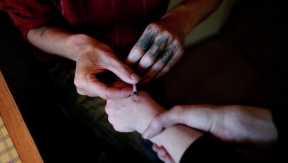
Over the last decade, syringe exchange programs have made major progress in combatting HIV and hepatitis C virus (HCV) rates among Black and Latino drug users. However, according to a new report by the U.S. Centers for Disease Control and Prevention (CDC), white opioid users use harm reduction facilities at much lower rates—which has led to a recent stagnation in the rate of needle-sharing across the country, U.S. News reports. The findings, published in the CDC’s latest Vital Signs report, show that the percentage of people who shared unclean needles in 2015 was about one third of injection drug users (IDUs), about the same proportion as 10 years ago, despite the fact that more people are using syringe exchange programs in the United States than ever before.

Looking into demographic data, the report noted that needle sharing decreased by 34 percent among African Americans and 12 percent among Latinos. However, for white drug users, needle-sharing rates decreased by only about 2 percent. And since white people are using heroin at more than double the rate they were 10 years ago, the CDC report showed that the overall percentage of IDUs who share needles has subsequently plateaued across the country. CDC findings also showed that white people are far less likely to use needle-exchange sites than their minority counterparts. White drug users included in the study also tended to be younger and more likely to be located in rural areas, where access to sterile syringes may be more limited, or in those urban and suburban areas where such programs are restricted or not allowed. As a result, the CDC report shows that the rate of HIV transmission among whites who inject drugs has not decreased since 2012 and that today, about 1 in 10 cases of new HIV infection arise from injection drug use. There has also been an estimated 150 percent increase in acute hepatitis C infections among all IDUs. Both epidemics are thought to have been largely fueled by the sharing of injection equipment.












